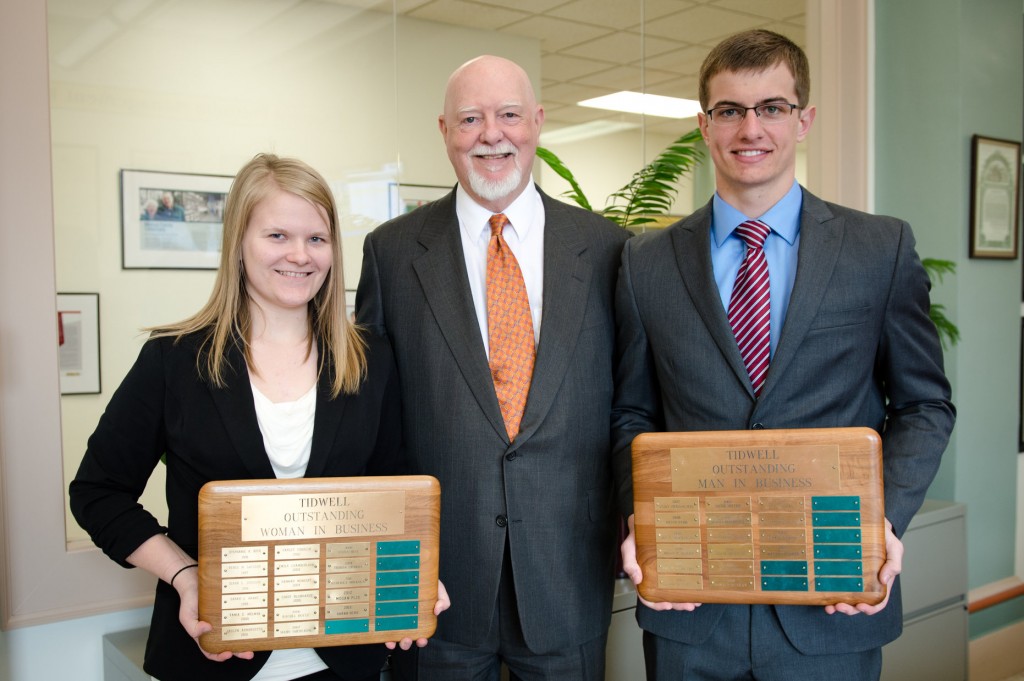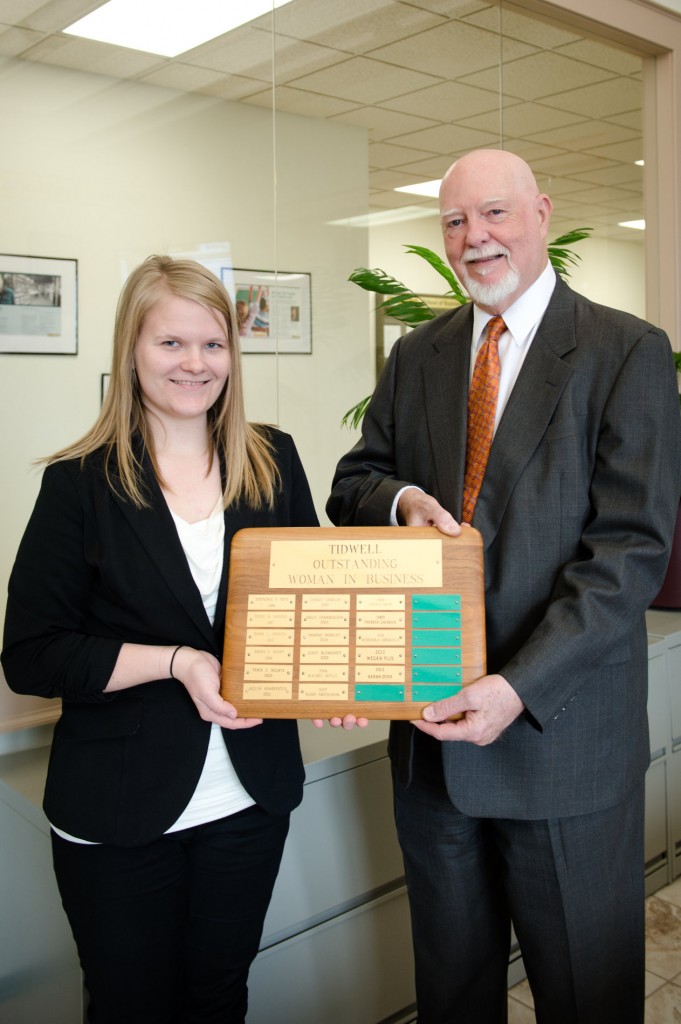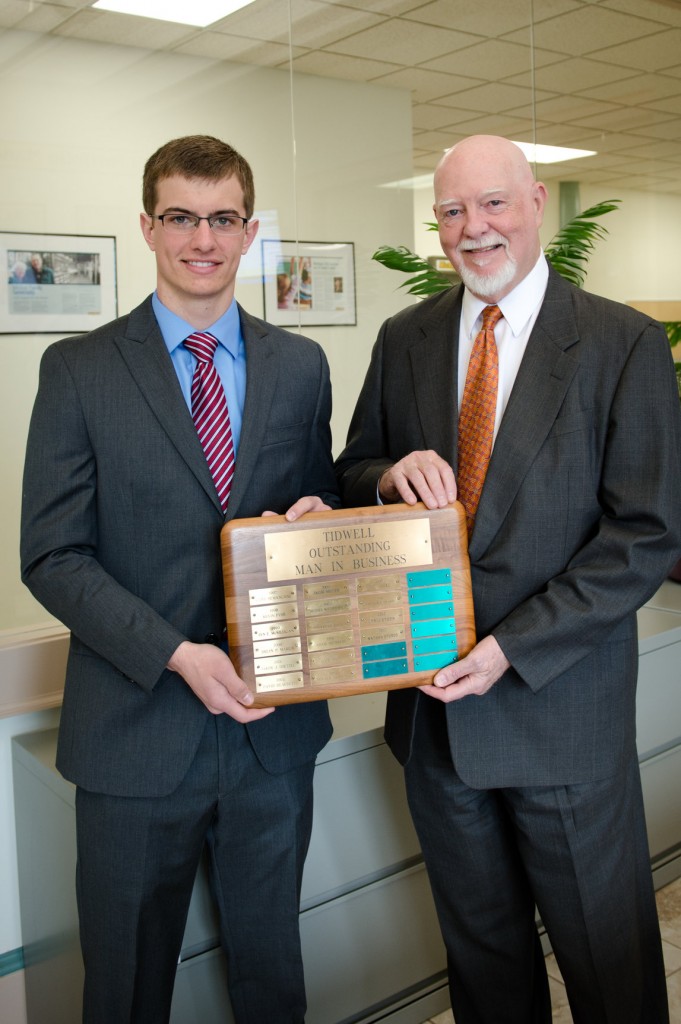Every year, the School of Business and Economics’ scholarship selection committee has the difficult task of choosing one male and one female student to be the Sam Tidwell Outstanding Man and Woman in Business. For 2014, it came down to Judy Isaacson as the Outstanding Woman in Business, and Cole Smith as the Outstanding Man in Business.

The Sam Tidwell Outstanding Man and Woman in Business awards are given annually to two current students who embody the mission of the School of Business and Economics. Selection for these titles is never easy, and 2014 proved to be particularly difficult. The selection committee, comprised of professors Anne Warrington, Mari Buche, Paul Nelson, and Michele Loughead, along with Academic Advisor Carly Harrington and student Nathan Sturos (2013 Outstanding Man in Business), received numerous high-quality applications. The application process itself was very rigorous, with required essays and interviews. Choosing the recipients is the scholarship committee’s way of recognizing these students for their dedication to academics, their leadership and extracurricular involvement within the Michigan Tech community, and their tireless commitment to the world of business. Dean Eugene Klippel praised the decision of the scholarship committee, stating, “While both [Cole and Judy] have excellent academic records, distinction lies in their willingness to assume leadership roles on campus, as well as engage in the experiential opportunities provided by the School’s many programs.”

Judy Isaacson, the 2014 Outstanding Woman in Business, hails from here in Houghton. As an Accounting major with a minor in Global Business, she plans to graduate in December 2014. Judy stays busy on campus through her active role in the Applied Portfolio Management Program and Volunteer Income Tax Assistance program. After studying abroad in Spring 2013 and working as a teaching assistant over the summer, Judy currently interns at the Superior National Bank and Trust in Hancock. These collective experiences will undoubtedly give her an edge toward her future career goals, which includes becoming an internal auditor focusing on the field of fraud. Grateful for the opportunities she has been afforded, Judy remarks, “The School of Business and Economics has shaped me into a professional businesswoman, prepared me for leadership roles and has given me confidence in my abilities.”

Cole Smith, the 2014 Outstanding Man in Business, also plans to graduate in December 2014 with his Bachelor of Science degree in Management, and has been on the Dean’s List for the majority of his academic career. He has exemplified a strong involvement within the Kappa Sigma Iota Accounting Club, where he holds the office of Vice President of Operations. Building his resume is very important to Cole, and he has held employment with DTE Energy, Hanley Excavating, Bob’s Custom Carpentry, Specialty Granules, Inc., and KC Docks. Cole, originally from Iron Mountain, Michigan, is appreciative of the fact that he was able to be so involved within Tech’s SBE. He stated, “It’s truly rewarding to have received this award. The faculty has been very supportive in and outside of class, which put me in a viable position to be a candidate for this award. It’s an honor and a great compliment to be recognized from the School of Business and Economics.”
Everyone within the School of Business and Economics could not be more proud of our 2014 Sam Tidwell Outstanding Man and Woman in Business. Congratulations, Cole and Judy!







